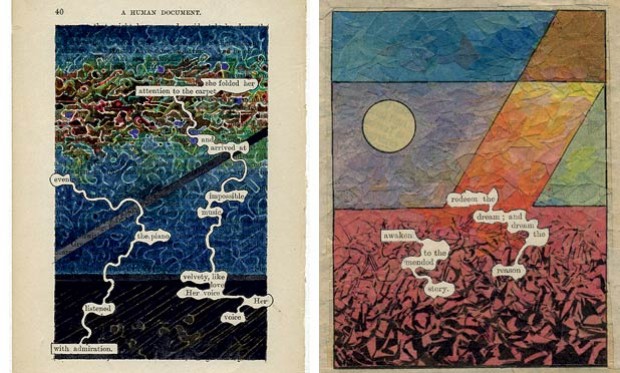
Jonathan Safran Foer’s new book, The Tree of Codes, has a marvelous title. But the real marvel begins when you turn the cover to find that the story is literally carved out of another work�namely, The Street of Crocodiles, the 1934 cycle of short stories by martyred Polish writer Bruno Schulz. The Tree of Codes‘ pages are die-cut, leaving windows and doorways scattered among the words and phrases from which Safran crafts his new work.
Stick with me�there’s a gadget angle on all this.
The Tree of Codes, a marvel of book production, is published by Visual Books, a fascinating new UK imprint, designed by Sara de Bondt and produced (in a book-arts tour de force) by the Belgian printing house die Keure.
(So, here’s tech angle no. 1: in 2010, the technology of so-called “old-fashioned book” production is still advancing. But there’s more�hang on.)
Vanity Fair‘s Heather Wagner asked Jonathan Safran Foer where he got the idea of cutting up the pages of a book to create a new work.
A couple of things: One is the book The Street of Crocodiles by Bruno Schulz. It�s a book I�ve always loved. Some things you love passively, some you love actively. In this case, I felt the compulsion to do something with it. Then I started thinking about what books look like, what they will look like, how the form of the book is changing very quickly. If we don�t give it a lot of thought, it won�t be for the better.
I like what Foer says there about giving the changing form of the book a lot of thought. I don’t need to tell you that the book is a technology; like all tech, it needs to be watched, considered, tested, rebooted. A number of commentators have noted that The Tree of Codes, with its emphasis on the tactile materiality of the traditional book, could never be reduced to an iPad app or a Kindle edition. This may be true; I’m not sure.
I was surprised, reading the Vanity Fair interview, that Tom Phillips’ 1970 work A Humument never came up. Like The Tree of Codes, Phillips created A Humument by selecting words from the pages of A Human Document, an 1892 novel by W. H. Mallock. Phillips didn’t work by cutting, but by drawing, creating graphic bubbles and streams of words and covering the rest of each page in fanciful design and illustration work.

A pioneering work of art and storytelling, has been published in numerous editions since 1970. And here, finally, is the gadget angle: it’s now available as an iPad app. It features previously-unpublished pages and freshly-scanned images. It also offers a twist not available in printed editions: a so-called “oracle” feature which, upon the entry of a date and a random number, selects two out-of-sequence pages to be read together.

Like Phillip’s original work and now The Tree of Codes, the Humument app is a thoughtful reconsideration of the ever-changing form of the book. And I can’t wait to see what artists, technologists, and bookfuturists to come will make of Foer’s work in years to come.
[A Humument iPad app via Rick Poynor at DesignObserver.com] Gearfuse Technology, Science, Culture & More
Gearfuse Technology, Science, Culture & More

